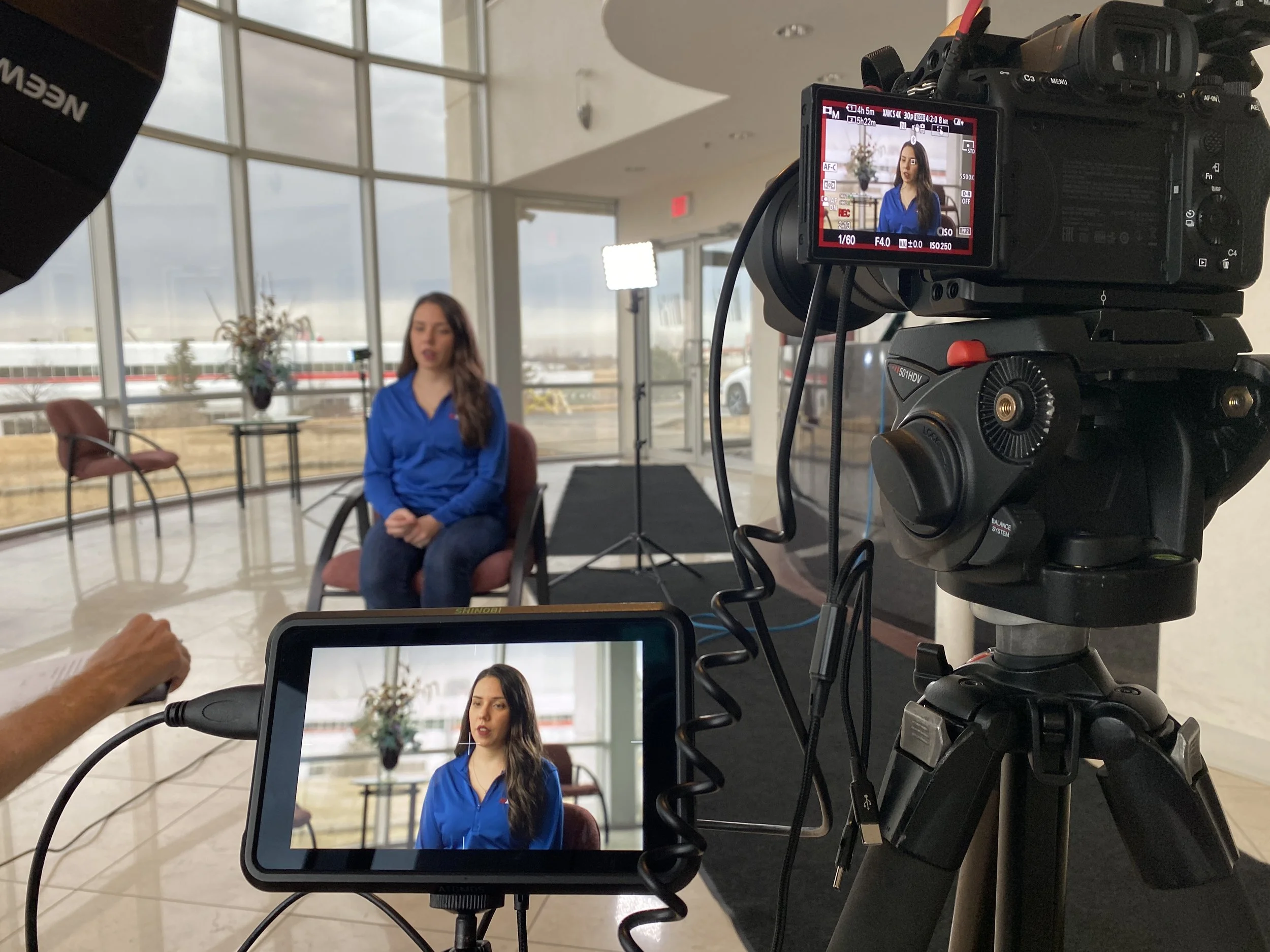12 Less-Obvious Tips for Producers Conducting Successful Interviews
Interviews are one of the most powerful tools in video production. Whether you’re capturing the perspective of an expert, a witness, or someone with first-hand experience, the quality of the interview often determines the strength of the final video. But great interviews don’t just happen — they’re shaped by subtle choices that go beyond asking questions.
Here are twelve less-obvious but highly effective tips I’ve learned over years as a freelance videographer and DP-for-hire in Wisconsin. These techniques can help producers guide conversations, reduce nervousness, and capture authentic sound bites that elevate any corporate video, promotional project, or documentary-style shoot.
1. Create a Relaxed Atmosphere
Let the interviewee know this is simply a conversation. Even if their answers are crucial to the production, removing pressure makes them more comfortable and genuine on camera.
2. Reassure Them About the Final Product
Remind them that editing will make them look and sound their best — and if a clip doesn’t work, it won’t be used. This builds confidence and trust.
3. Frame It as a Conversation, Not a Test
If someone asks for the questions ahead of time, a simple response like, “We’ll just talk about your area of expertise” can keep things natural instead of scripted.
4. Keep Questions Short
Short, clear questions usually lead to concise, usable sound bites. Long, complex questions tend to produce long, meandering answers.
5. Coach Only When Needed
Some people need reminders — like speaking in full sentences or avoiding eye contact with the camera. But constant corrections can make them nervous. Judge whether coaching should happen during or after the interview.
6. Match the Energy in the Room
Interviewees often mirror the tone of the interviewer. If you’re upbeat, they’ll respond with energy. If you’re calm, they’ll likely stay grounded. Use this to guide the tone of their answers.
7. Keep the Setup Lighthearted
During gear setup, a little humor or casual conversation can set a relaxed mood before the interviewee even sits down.
8. Don’t Cover Key Content Before Rolling
Small talk is fine, but avoid diving into the subject before the cameras are rolling. You don’t want to miss the natural impact of a first response.
9. Avoid Yes/No Traps
If you get a one-word answer, follow up with “Why?” or “Can you explain that further?” to draw out useful details.
10. Ask “Simple” Questions
What may feel like basic or obvious questions often lead to clear, foundational answers that provide valuable context for viewers.
11. Interrupt With Care
Sometimes you need to gently redirect a long or off-topic response to save editing time. Just weigh whether it’s polite to cut in, depending on the person’s personality.
12. Use Eye Contact to Build Trust
Steady eye contact signals that you’re listening and invested in the conversation. Don’t stare, but avoid breaking focus by checking notes or looking around too often.
Strong interviews don’t just happen — they’re guided. As a freelance videographer and DP-for-hire, I often step in with producers to ensure the right follow-up questions are asked, so the edit has everything it needs. These tips can help you capture more authentic, usable responses and ultimately create a stronger final video.

